The NVIDIA SHIELD Tablet Review
by Joshua Ho on July 29, 2014 9:00 AM EST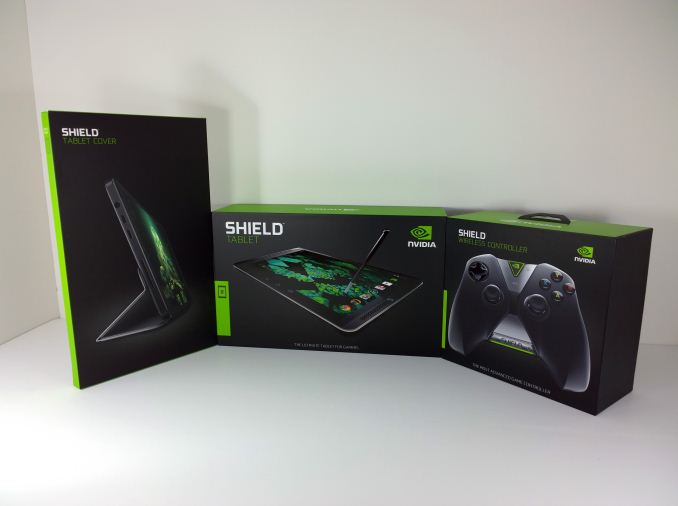
As I discussed in our launch article last week, the Shield tablet is very much the culmination of lessons learned from 2013. While the Tegra Note 7 was a decent tablet, it had to eke out a profit through hardware sales against competition that was willing to sell their tablets with no profit on hardware. Meanwhile the Shield portable was a good portable gaming device, but it was far too specialized to be anything but a gaming device. Without an established gaming ecosystem, NVIDIA struggled against established competitors.
As a result of these influences, today NVIDIA is becoming the first OEM to launch a serious gaming tablet running Android. While gaming tablets have been done before, they’ve been few and far between. Now it has always been technically possible to take a high end tablet and make it usable for gaming, but for the most part these attempts are marred by either the need for root or an application that requires extensive work on the part of the user to create proper control profiles for each game. In addition, the SoC in the tablet is often underequipped for intensive 3D gaming.
That’s where the Shield tablet comes in. With Tegra K1, a dedicated controller, 2x2 WiFi, and a huge amount of custom software, there’s definitely a lot of ground to cover. Once again, while the Shield tablet is a gaming device, it must also be a good tablet. To that end, NVIDIA has tried to differentiate this tablet with DirectStylus 2 and dual front facing speakers/bass reflex ports. I’ve included a table of specifications below to give a general idea of what the tablet is like.
| NVIDIA Shield Tablet | |
| SoC | Tegra K1 (2.2 GHz 4x Cortex A15r3, Kepler 1 SMX GPU) |
| RAM/NAND | 2 GB DDR3L-1866, 16/32GB NAND + microSD |
| Display | 8” 1920x1200 IPS LCD |
| Network | N/A or 2G / 3G / 4G LTE (NVIDIA Icera i500 UE Category 3/4 LTE) |
| Dimensions | 221 x 126 x 9.2mm, 390 grams |
| Camera | 5MP rear camera, 1.4 µm pixels, 1/4" CMOS size. 5MP FFC |
| Battery | 5197 mAh, 3.8V chemistry (19.75 Whr) |
| OS | Android 4.4.2 |
| Connectivity | 2x2 802.11a/b/g/n + BT 4.0, USB2.0, GPS/GLONASS, mini HDMI 1.4a |
| SIM Size | None or MicroSIM |
| Price | $299 or $399 (16GB/WiFi or 32GB/LTE) + $59 (optional controller) |
Hardware
Outside of the basic specs, the tablet itself has a much more subtle industrial and material design. While the large speaker grilles are maintained from the Tegra Note 7, the dimpled look and feel is gone. Instead, the finish is very much reminiscent of the Nexus 5. The feel isn’t quite rubbery the way soft touch finishes tend to be. Instead, it feels more like a high grain matte polycarbonate. Along the sides, there’s a noticeable chamfered edge where the back cover meets the display, although in practice this mostly affects aesthetics rather than in hand feel. The flip cover that is designed for the device is almost identical to the one in the Tegra Note 7, and folds up similarly. As with the Tegra Note 7, there are two angles that the flip cover can take. Overall, the aesthetic is much more subtle than the Tegra Note 7, and looks quite similar to the Nexus 7 (2013).
While it’s important for the tablet portion of the device to have decent material and industrial design, ergonomics and material design are critical for the controller. While the Shield portable had great ergonomics, it was heavy because the entire device had to fit in the controller. With Shield Tablet, that’s no longer the case. The result is that the controller is significantly lighter. While it still has some heft to it, I no longer feel the need to rest my hands against a table after significant playtime.
The controller itself is just as good as the one on the Shield Portable. The buttons, triggers, bumpers, and joysticks are all very close in feel. The one big difference are the tablet/Android controls. Instead of physical buttons, they’ve replaced the physical buttons with capacitive ones. The volume controls have also been moved down to the bottom of the controller and changed from a single button that triggers on-display volume controls to a rocker that allows direct manipulation of volume. Just above the volume rocker is a clickpad, which can be used to move a cursor through the UI. While this option exists, it’s a bit unpolished as the sensitivity isn’t tuned quite right to quickly navigate through the tablet.
Of course, there’s more to the controller than just the buttons and controls. NVIDIA has made sure to do things right by using WiFi Direct for communicating between the controller and the tablet. The frequency used depends upon what access point the tablet is connected to, so it can switch between 2.4 GHz and 5 GHz as necessary. NVIDIA claims that using WiFi Direct instead of Bluetooth drops latency by half, and also allows for microphone input and sound output via 3.5mm jack through the controller. In practice, the controller works great. I don’t have any complaints about this at all. Pairing is as simple as pressing and holding on the NVIDIA logo for a few seconds, then opening the pairing application. Up to four controllers can be paired to the tablet this way, which introduces interesting possibilities for local multiplayer games such as Trine 2. I also didn’t notice a difference in response time of the wireless controller when compared to the wired controller of Shield Portable. It’s incredibly important to get the controller right for gaming devices, and NVIDIA has nailed it. Overall, I’m happy with the basic hardware for both the controller and tablet. While it would be interesting to see a metal unibody design on the tablet, it’s difficult to justify at the price point that this device has to hit.
Of course, while hardware is important, software makes or breaks this tablet, so that’s next.


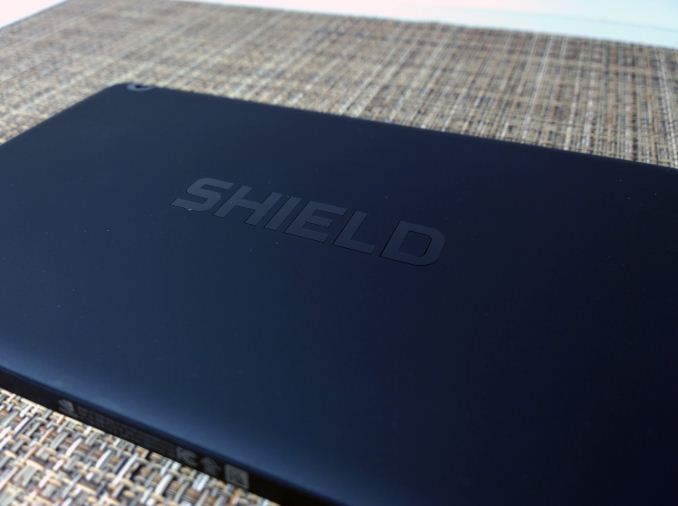
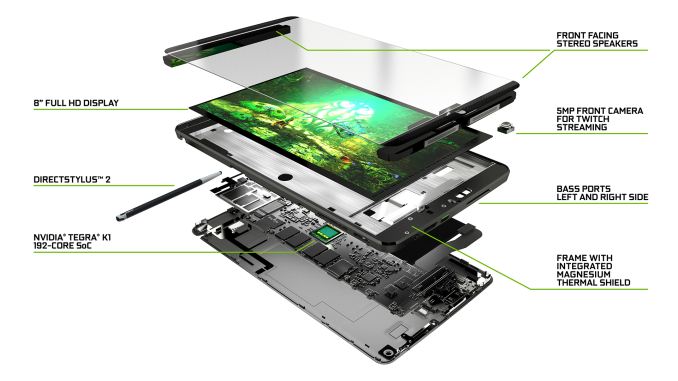
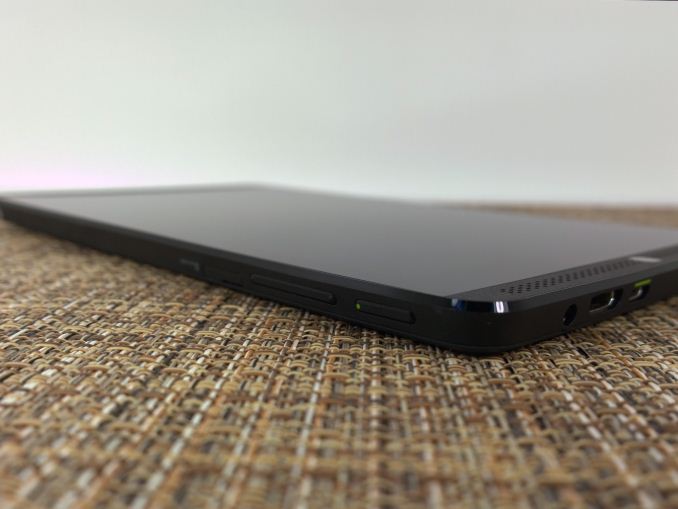
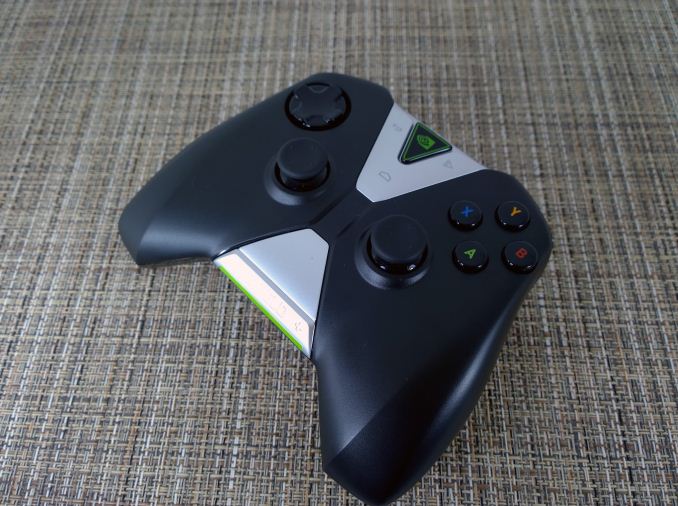








174 Comments
View All Comments
kron123456789 - Thursday, July 31, 2014 - link
Yes, you can use your Xbox360 controller with that tablet.LedHed - Wednesday, July 30, 2014 - link
When is NVIDIA going to start putting competitive SSD's inside of their mobile devices?baii9 - Wednesday, July 30, 2014 - link
Any comparison with a bay trail win8.1 tablet?nicolapeluchetti - Thursday, July 31, 2014 - link
Am i the only one who doesn't see the point of a gaming tablet with only 2.5 hours of battery when playing games?The need of a tablet for gaming is more related to situations where you have to play for lots of time without charging. I know that you can dial down the graphics and save the battery, but then where are the difference from an iPAd Air (which also has many more games?). This is totally pointless for me, it could have been good if battery lasted 5-6 hours, like it is know it's pointless.hahmed330 - Thursday, July 31, 2014 - link
If you run an ipad air full blast the batteries will last for 2.5 hours only... This is what they did.. If you run say dead trigger 2 or something like that the battery would last per say 4-5 hours.. That's pretty damn impressive by the way... I really hope this is successful as I would love play some really nice games..semi177 - Friday, August 1, 2014 - link
the comments on this site used to be good to read. now i just see bashing and misinformed comments. The admin should consider pushing down fanboy war threads much lower down and keep the useful ones on top.TheinsanegamerN - Monday, August 4, 2014 - link
Anybody know where the 32GB tablet is, or when it will release? not even nvidia shows it as available on their website, nor even mentions it.scbundy - Thursday, August 7, 2014 - link
So much for Charlie D's prediction that the Tegra K1 was going to be super hot, have a huge heatsink and use 50W.Azurael - Friday, August 8, 2014 - link
It's a bit of a disappointment in the display department, much like the Tegra Note 7 (which uses exactly the same display as the original Nexus 7 with a marginally better calibration as far as I can see) The stylus is great (in fact, I prefer it to the Wacom-developed screen in the Galaxy Notes) as is the SoC performance and value proposition - but if they want to appeal to people other than gamers (I would certainly have bought this), they've got to work on that LCD. I skipped the Nexus 5 and bought a G2 despite objecting to its size because the N5 LCD was a massive step backward in contrast from that in the Nexus 4 when calibrated. I bought a 2013 Nexus 7 to replace my 2012 Nexus 7 a few weeks ago because the LCD in the otherwise great Tegra Note is not a step forward. When will device manufacturers other than Apple realise that people do care about the LCD?sandy105 - Tuesday, April 28, 2015 - link
I have both the tegra note 7 and nexus 7 2012 .The one on nexus 7 has bonded fused display while the touch layer and screen are separated on tegra note7 making it very poor and VERY reflective.It also has muted colors and looks washed out.